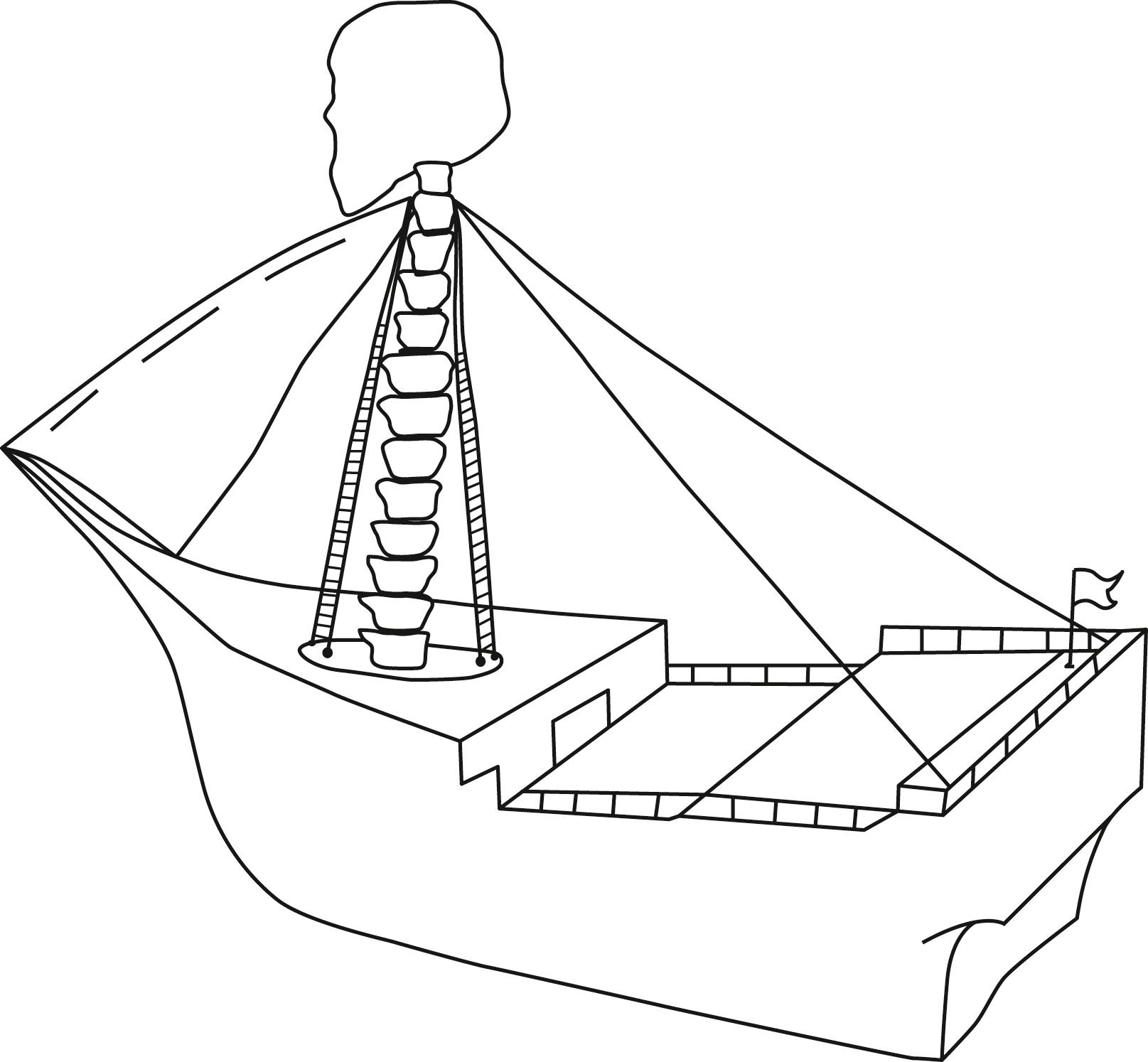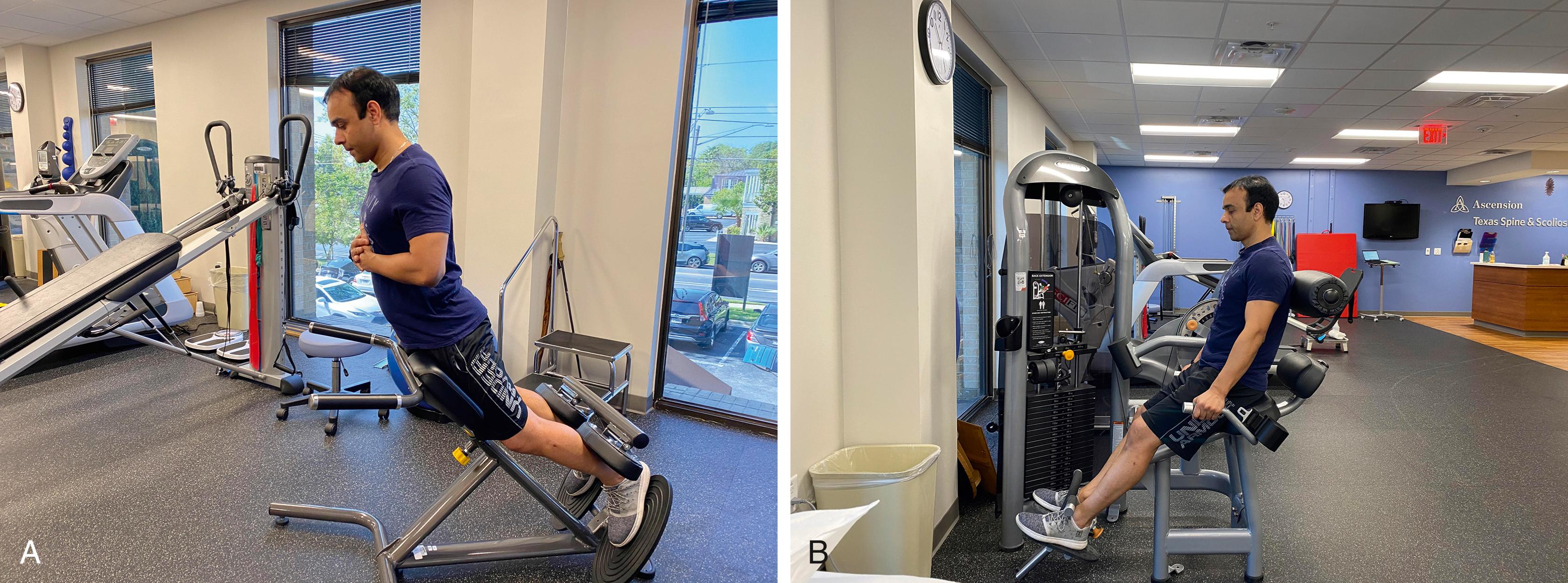Physical Address
304 North Cardinal St.
Dorchester Center, MA 02124
The muscles of the spine provide a “dynamic tension band” that is critical for optimum “balance” of the spine and a curvilinear plane that “loads” the discs, bones, and muscles. Optimum strength and fiber length provide balance through the spine and associated joints of shoulder girdle and pelvic girdle that allows optimum function.
There is an absence of evidence that fitness of the anterior abdominal musculature decreases the risk of age-related change to the spine or the risk of injury in athletes or from vocational overuse.
A sagittal and coronally balanced spine with intact curves provides efficient static function for the spine and is noted by electromyography silence within normal functional parameters.
Questionnaires assessing patient-reported outcomes that score high in the domains “fear avoidance” and “kinesiophobia” show a high correlation with deficits in strength and endurance that are greater than one standardized deviation below “control normal” from the population.
There is moderately positive evidence that strengthening activity targeting spine muscles provides effective nonpharmacological analgesia for chronic spine-related pain.
Muscle-sparing surgery is a promising, but unproven, innovation that aims to decrease convalescence, decrease surgical morbidity, and improve functional restoration.
The spine is a competing collection of rigid, semirigid, and mobile subsegments that, in several primates, including humans, allow the animal to move, lift, dig, and return to a balanced upright, bipedal stance to escape, chase, climb, or carry a heavy object to a place of defensible safety. The elements of the bony spine maintained many of their fundamental features throughout the 500 million years between the Cambrian and Ordovician Period. Complex interplay between embryological structures allows the coexistence of primitive notochordal, neuroectoderm, vascular endoderm, and cartilaginous, ligamentous, bony mesoderm. However, only the somite-derived V-shaped muscles can animate this complex warp and weft of diverse cell types that compose the uniquely complicated organ system known as the spine.
The dynamic functional action of the spine simultaneously encompasses the structural rigidity to protect neurovascular elements that communicate signals from the brain to the legs and the dynamic features that allow a human to run, climb, lift, dig, and carry. Current musculoskeletal advice emphasizes the concept of “core strength/stabilization” for injury prevention as well as rehabilitation from vocational or other spine injuries. Although this seems a straightforward concept, there are substantial differences between evidence and clinical practice. For approximately 4 decades, the primary focus in “core exercise” has been around abdominal muscle strengthening, activation, and exercise. The reader likely already understands that muscle “strength” is comparatively measured in work or power rather than by force generated. By this measurement alone, the posterior lumbopelvic complex has significantly greater work and power numbers then the anterior abdominal complex. Kinematic studies of pitchers, golfers, endurance bikers, and skiers repeatedly demonstrate the singular importance of the lumbopelvic musculature in differentiating top athletes from amateurs. Highly dynamic spinal pelvic muscle allows for acceleration of the hips when the spine is stable and extension-directed acceleration of the spine when the legs are fixed. Very few functional tasks (gymnastics and diving excepted) require accelerating the trunk into a flexed position. Moreover, previously promoted exercises focusing on the abdominal musculature/fascia have failed in metaanalyses to demonstrate the ability to protect against injury in competitive athletes or in a vocational setting. , Moderately strong evidence exists that thoracolumbar extensor muscle “deconditioning/disuse” is a causal factor in chronic low back pain. , Randomized controlled trials of lumbopelvic and thoracolumbar strength and endurance training in athletes continue to assess their role in performance preparation. The rest of this chapter will focus on the large and segmental spine muscles of the thoracolumbopelvic area and the capitocervical area in promoting functional health and limiting pain during normal activity.
The muscles of the spine serve the paradoxical purposes of simultaneously vitalizing with movement and protecting with strength the central neural communication link between the brain and periphery, while protecting the central vascular circuit between the heart and the distal extremities. Unfortunately, without muscle, the osteoligamentous protective structure of the spine buckles under compressive loads greater than 90 Newtons (approximately 20 lbs). Muscles are the paramount substructure of the spine, coupling concentric power with eccentric “braking forces” to efficiently conserve energy while allowing an organism to seek sustenance to pass along its genetic code and to find or build shelter.
The spine is made up of 24 “motion segments” composed of muscle, cartilage, disc, ligament, tendon, and bone. Other chapters will delve into this area. Few spine “motion segments” move in isolation (possible C0‒C1 and C1‒C2), with regions of the spine providing coupled movement like links in a chain or treads in a tank track. Panjabi and White described the interplay between the three subsystems of spinal control: muscle control, passive-restraint control, and neural-proprioceptive control. Although this concept has been challenged as confusing, it has been well demonstrated in subsequent literature that muscles provide all three subfunctions to the spine near-simultaneously within the context of a functional task ( Fig. 7.1 ).

In a simplified way, spine muscles act to counterbalance the forces of motion to maintain the integrity of the spine throughout its range of motion. If you imagine the image of guy-wires supporting a ship’s MAST like muscles support Mast stability with downward force, as shown in Fig. 7.1 , the cotensioning of spine muscles counteract the abdominal muscles that force the spine into flexion, combining to create a collective downward vector that minimizes shear forces across the disc space and fragile neural elements. The dynamic cotensioning forces of the segmental and long muscles of the spine during flexion-extension allow maintenance of “balance” of force vectors. Coupled ventral and dorsal forces have a net compressive force that, in turn, balances motion at the instantaneous axis of rotation for each motion segment—thereby maintaining compression at the disc and minimizing angular change. , This net muscle force serves to offset other forces, thereby maintaining the force vector perpendicular to the disc’s plane and stabilizing the spine, like the guywires allowing flimsy tent material to withstand 100-mph winds. The compressive force vector likewise minimizes shear forces, which have been implicated as a leading cause of disc degeneration.
Architect Louis Sullivan’s maxim that “form follows function” has been applied by many spine researchers looking at the implications of microstructure for causal association of pain and limitations. So far, no clear consensus has emerged that microanatomical analysis of fiber type or fiber direction gives any effective prognostic clinical insight into injury prevention or safe rehabilitation.
Voluntary, or skeletal, muscle is by far the muscle type of greatest volume in humans, making up 40% to 50% of total body weight. The muscles of the spine make up the largest percentage of skeletal muscle. The muscles themselves are constituted of a histologically distinct group of multinucleated cells with special adaptations called sarcomeres or muscle fibers. The functional unit of the sarcomere contains T-tubules, which stimulate the rapid release and sequestration of calcium within the sarcoplasmic reticulum, as well as areas of long, light-colored and dark-colored bands (or striations) composed of overlapping actin and myosin proteins specifically adapted for contraction (shortening). Production of adenosine triphosphate is key to the process of contraction, and the skeletal muscle sarcomere tends to possess a greater density of mitochondria compared with other cell types in the human body. Several hundred individual sarcomeres or “fibers” are organized by the perimysium and associated neurovascular support into muscle fascicles. These fascicles collectively constitute an individual muscle organ across a given joint. Each fascicle possesses variable nerve innervation (neuromuscular junction) along its course that in turn stimulates coordinated contraction of the sarcomere. It is still a matter of debate whether stem cells form new sarcomeres after puberty. What is certain is that, under the influence of external force, stress, and hormonal signaling, muscle fibers hypertrophy and modify their internal organelles, which successively changes contractile speed, force, and local corecruitment of adjacent sarcomeres, a process that is clinically referred to as “training” ( Fig. 7.2 ).

Become a Clinical Tree membership for Full access and enjoy Unlimited articles
If you are a member. Log in here